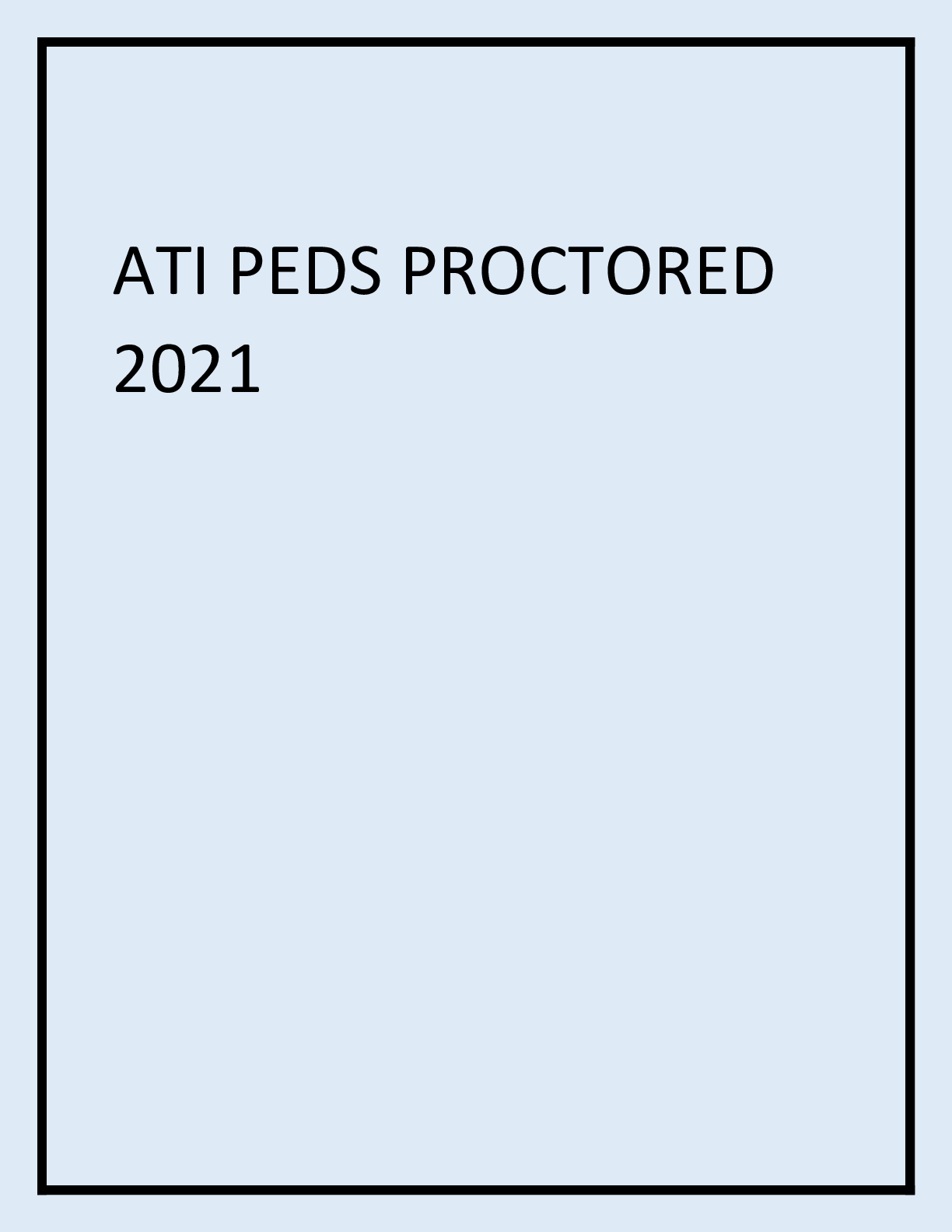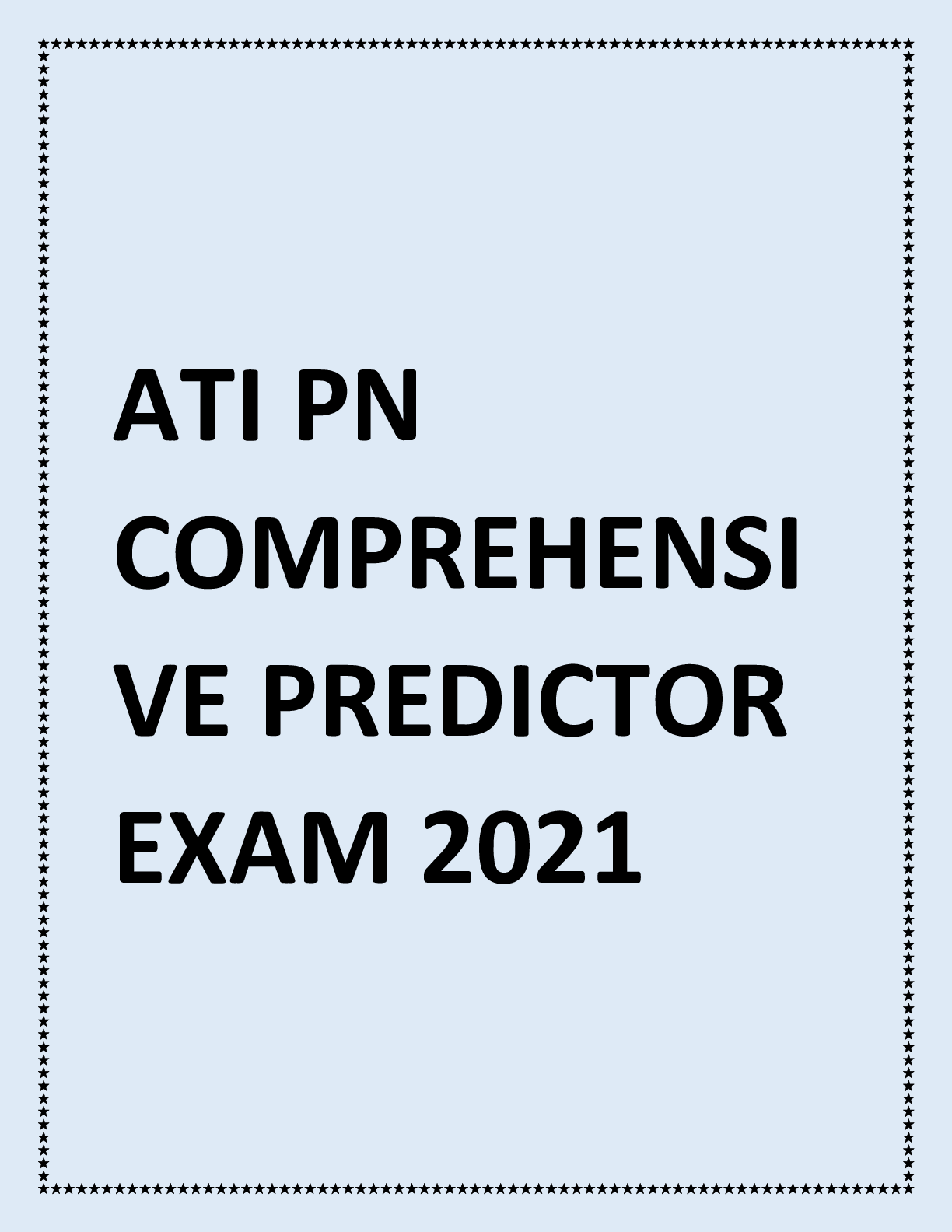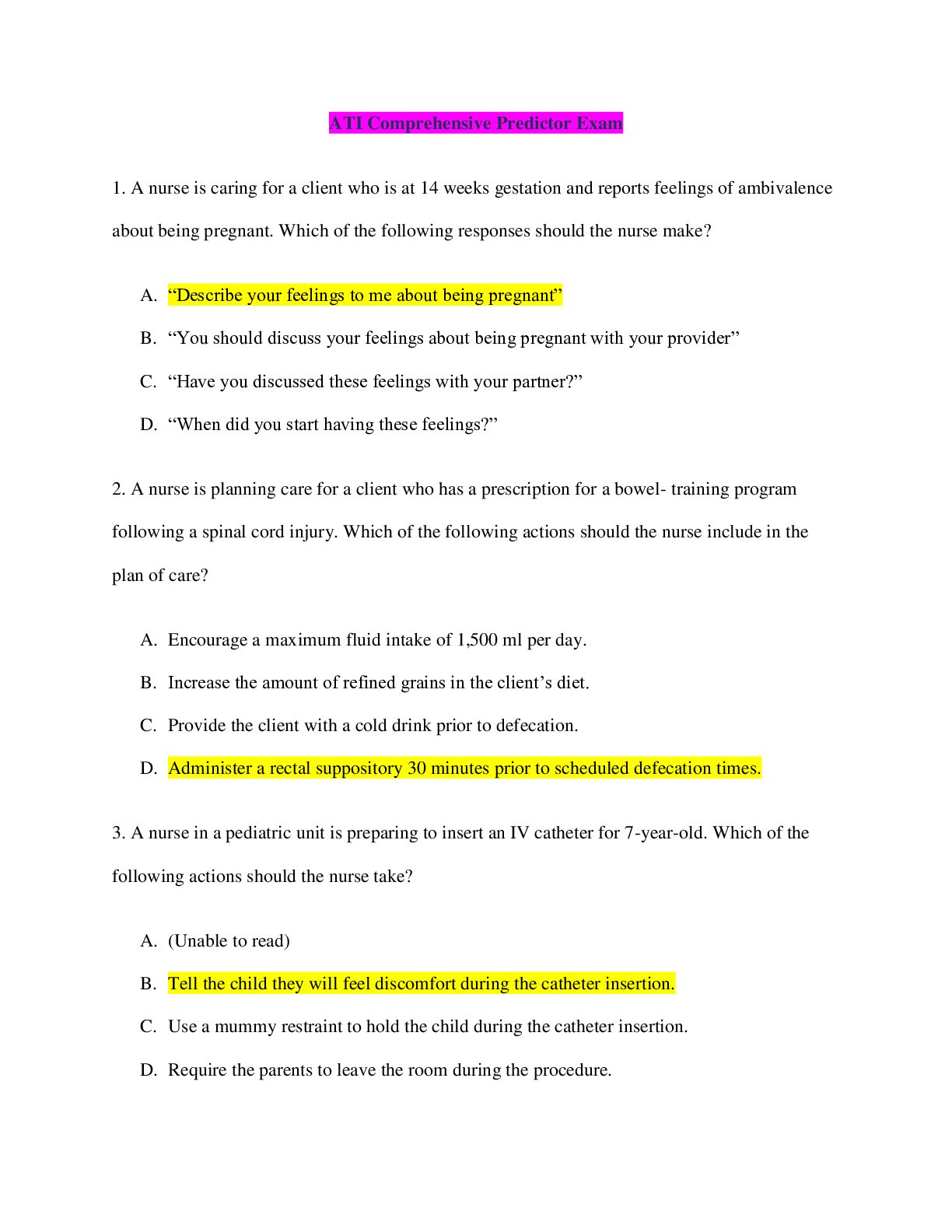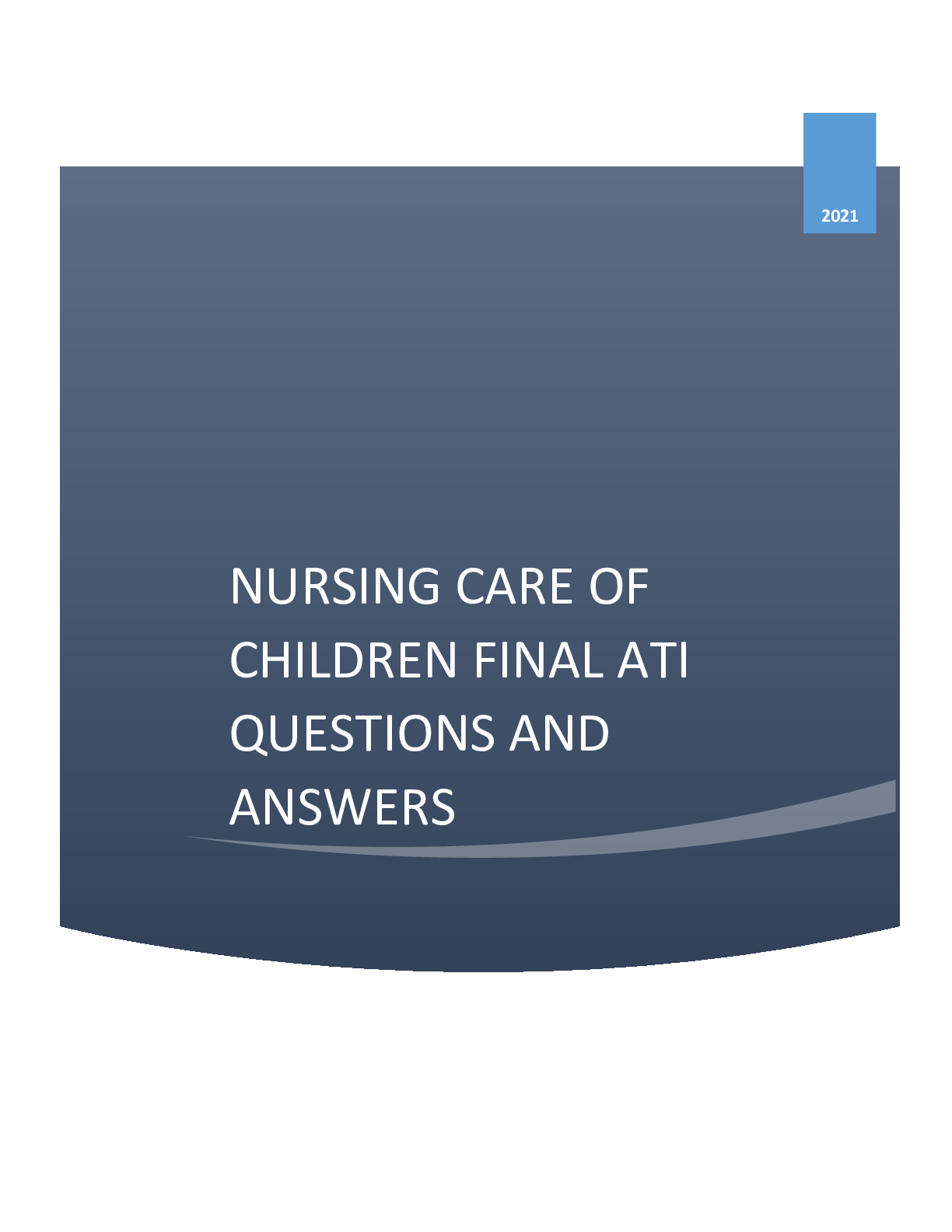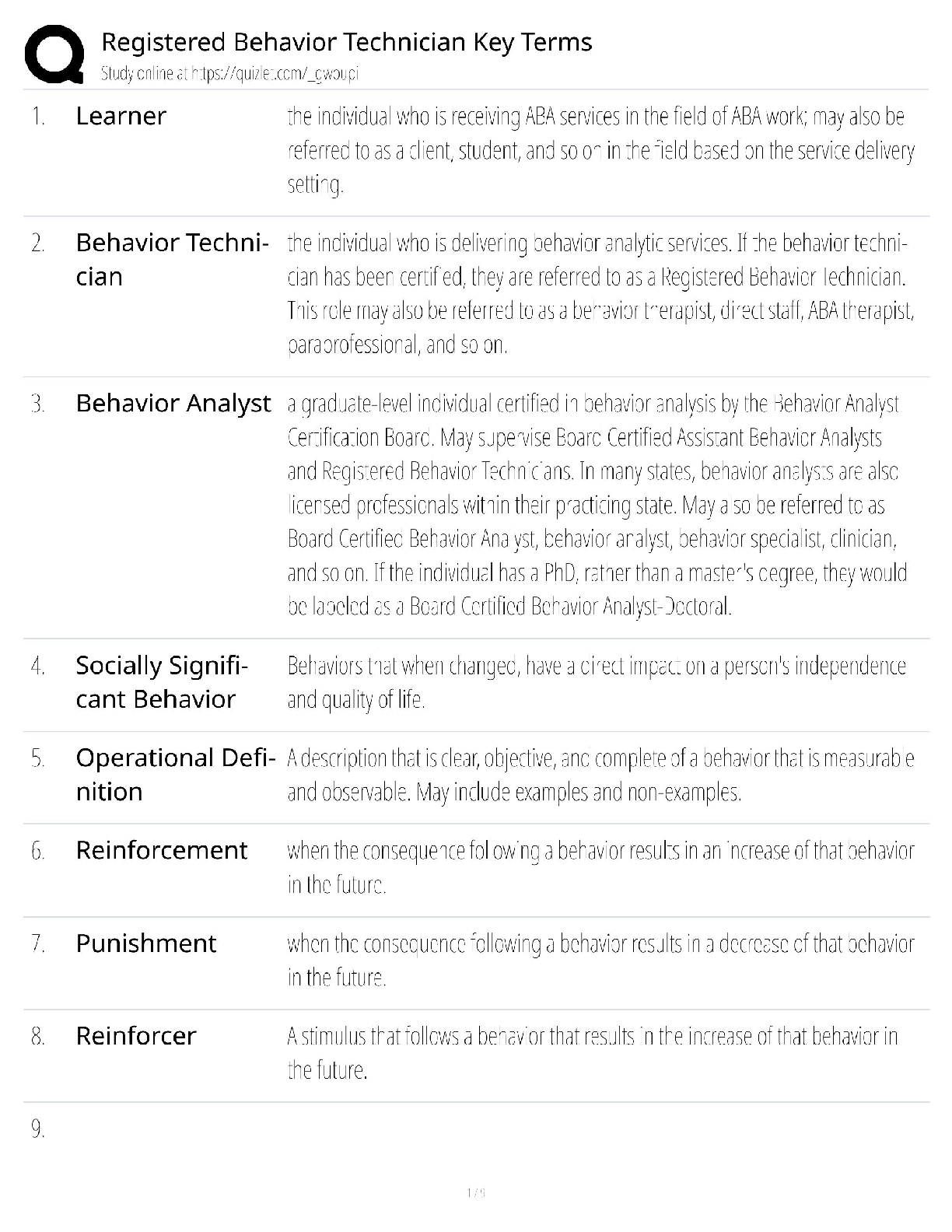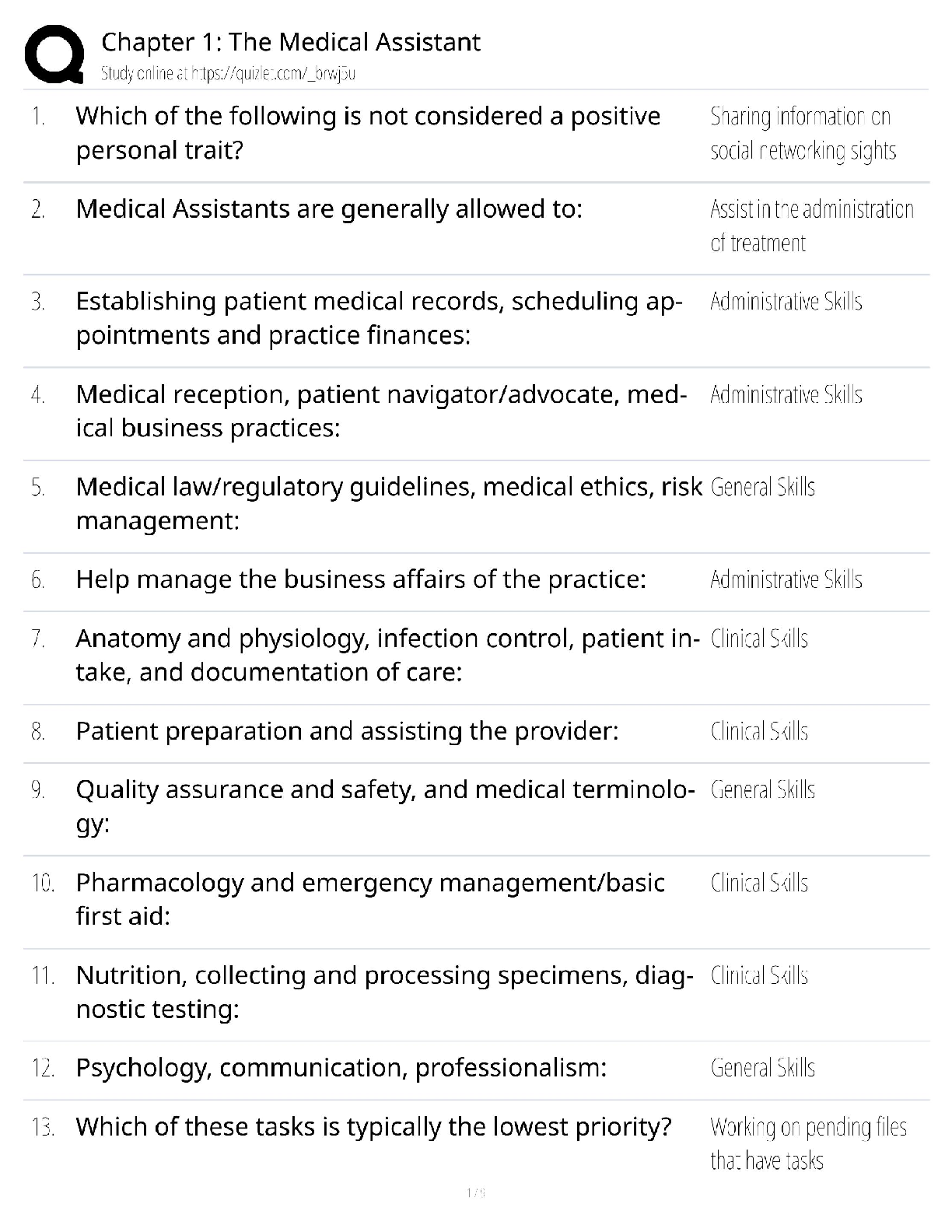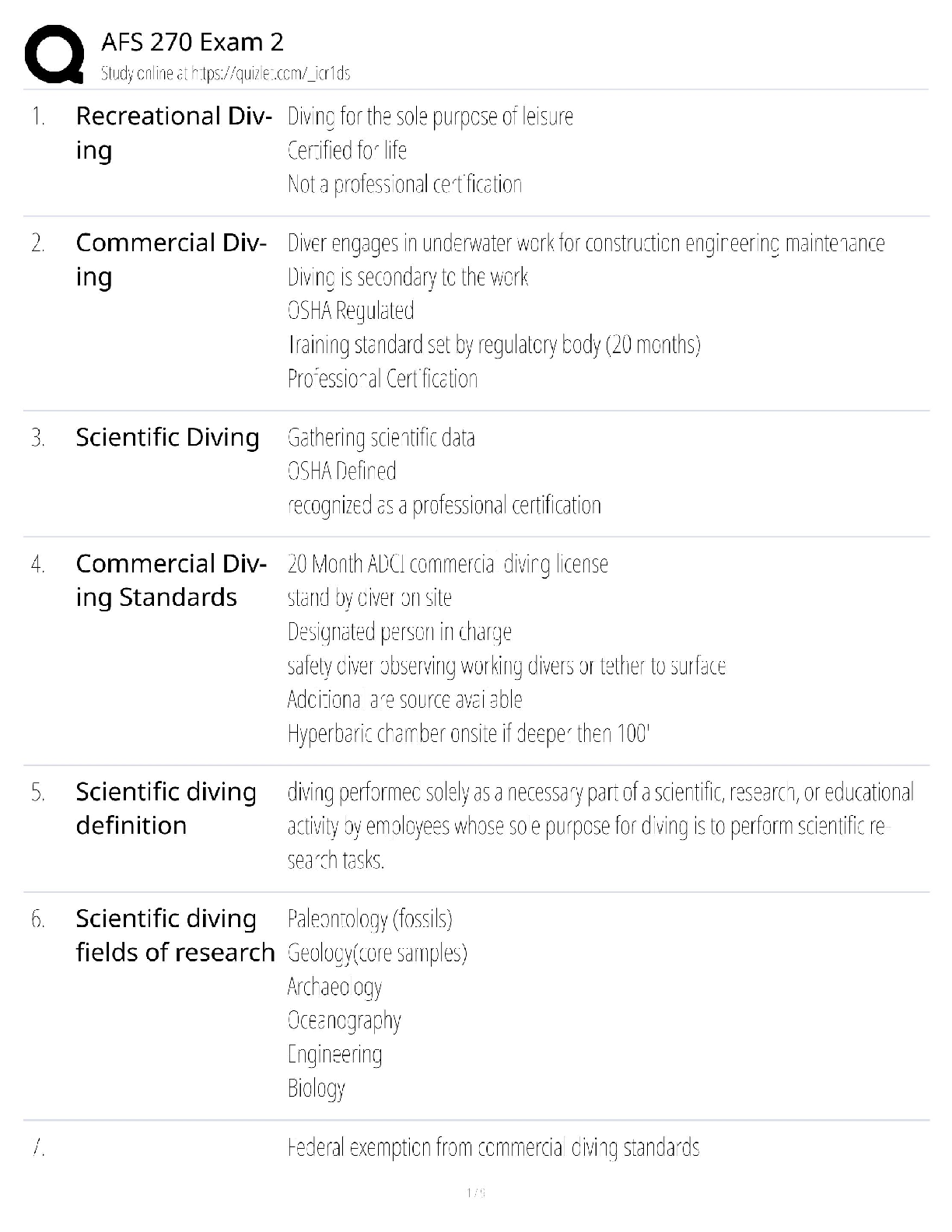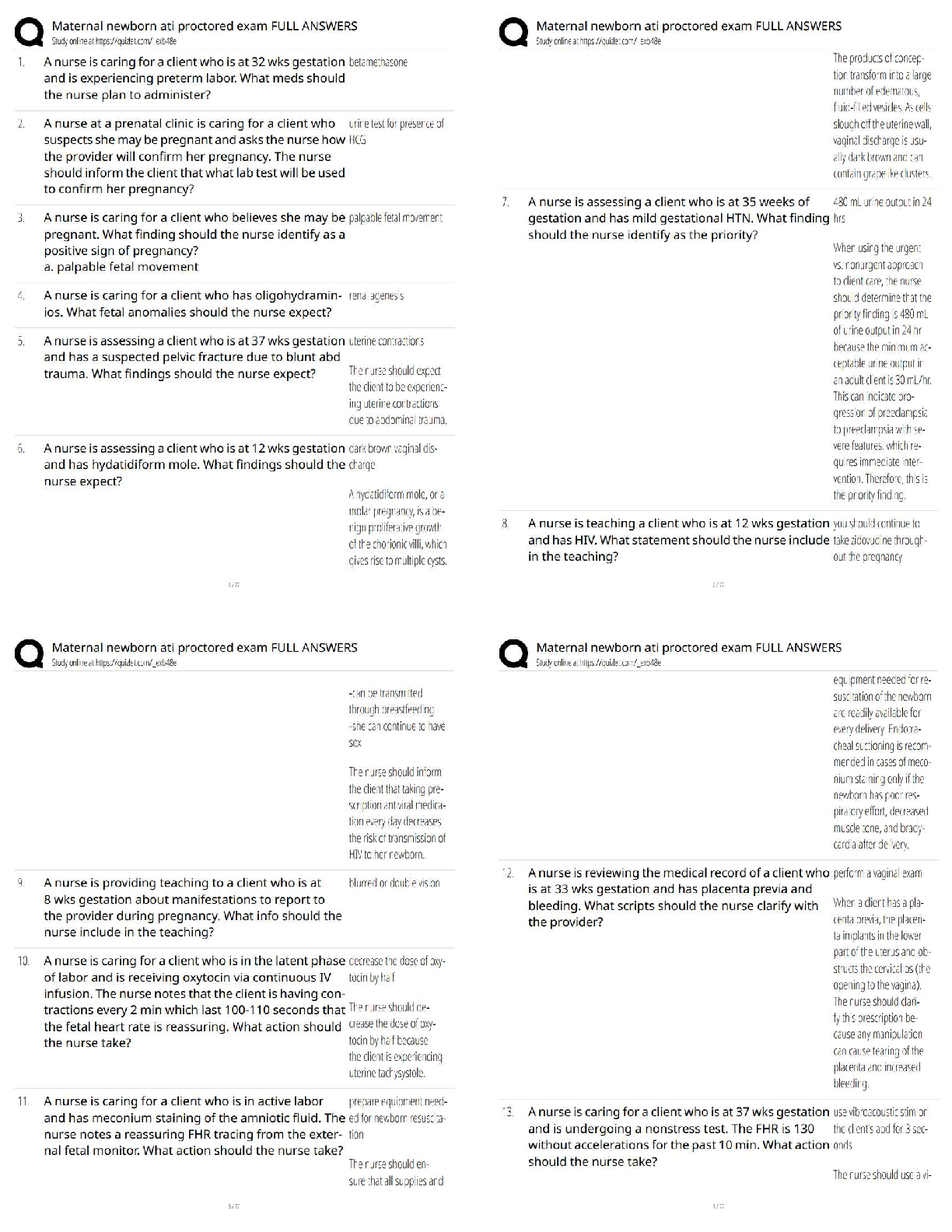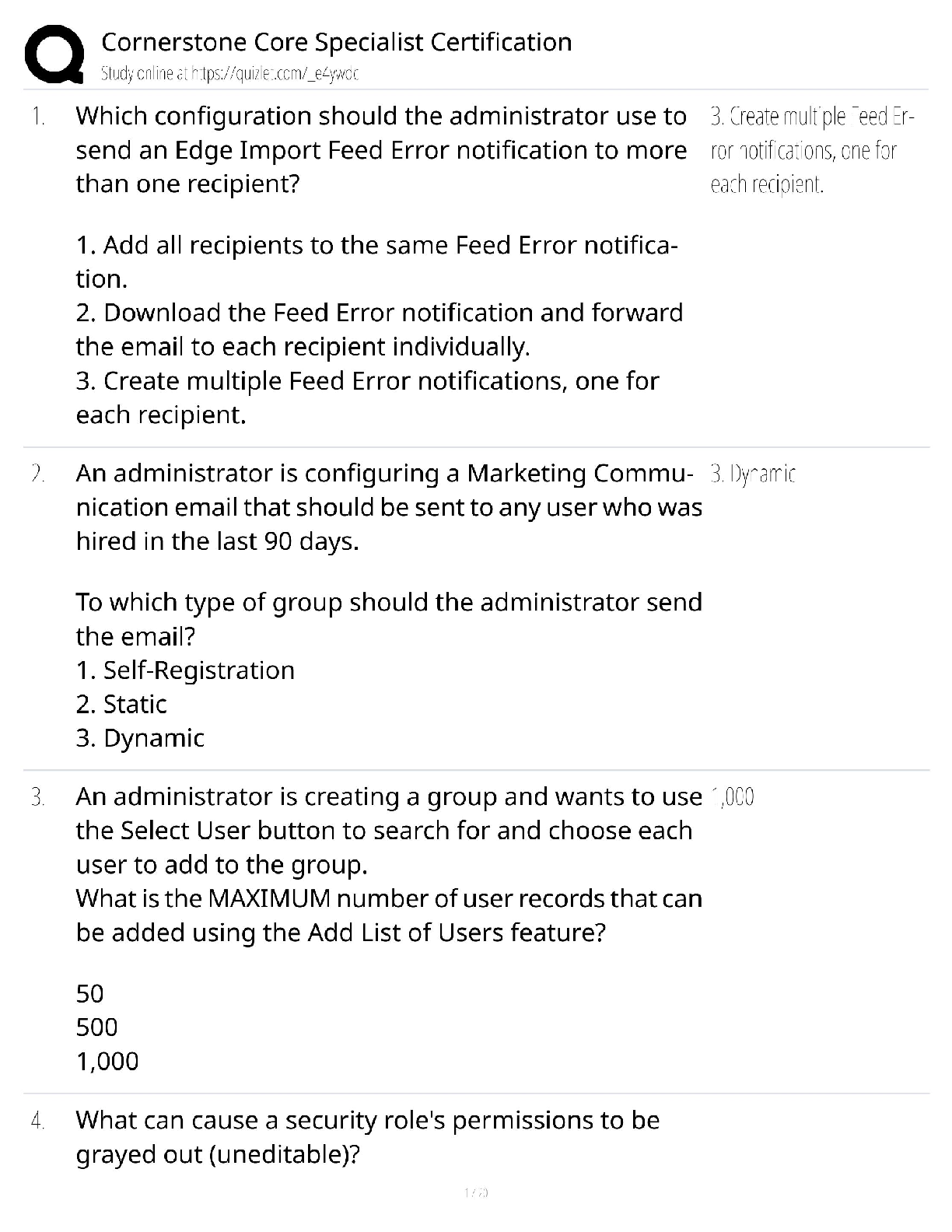*NURSING > QUESTIONS and ANSWERS > ATI Respiratory, Questions and Answers with Explanations, All Correct, Download to Score A (All)
ATI Respiratory, Questions and Answers with Explanations, All Correct, Download to Score A
Document Content and Description Below
ATI RESPIRATORY A nurse is caring for a client who is scheduled for a thoracentesis. Prior to the procedure, which of the following actions should the nurse take? A. Position the client in an uprig ... ht position, leaning over the bedside table B. Explain the procedure to the client C. Obtain ABGs from the client D. Administer benzocaine pray to the client A A nurse is assessing a client following a bronchoscopy. Which of the following findings should the nurse report to the provider? A. Blood-tinged sputum B. Dry, nonproductive cough C. Sore throat D. Bronchospasms D. Bronchospasms can indicate the client is having difficulty maintaining a patent airway. The nurse should notify the provider immediately A nurse is caring for a client who is scheduled for a thoracentesis. Which of the following supplies should the nurse ensure is in the client's room? (Select all that apply) A. oxygen equipment B. Incentive spirometer C. Pulse oximeter D. Sterile dressing E. Suture removal kit A, C, D Oxygen equipment is necessary to have in the client's room if the client becomes short of breath following the procedure Pulse oximetry is necessary to monitor the client's oxygen saturation level during the procedure A sterile dressing is necessary to apply to the puncture site following the procedure A nurse is caring for a client following a thoracentesis. Which of the following manifestations should the nurse recognize as risks for complications? (Select all that apply) A. Dysnea B. Localized bloody drainage on the dressing C. Fever D. Hypotension E. Report of pain at the punture site A, C, D Dyspnea can indicate a pneumothorax or a reaccumulation of fluid. The nurse should notify the provider immediately Fever can indicate an infection. The nurse should notify the provider immediately Hypotension can indicate intrathoracic bleeding. The nurse should notify the provider immediately tidaling expected in water seal chamber cessation of tidaling in water seal chamber signals lung re expansion or an obstructoin within system continuous bubbling in the water seal chamber indicated an air leak pneumothorax air in pleural space hemothorax blood in pleural space pulmonary empyema accumulation of pus chest tube report drainage over 70ml/hr Upgrade to remove ads Only $2.99/month if tubing seperates instruct client to exhale and cough if chest tube drainage system is compromised immerese end of chest tube in sterile water if ac chest tube is accidentally removed dress the area with dry sterile gauze ss tension pneumothorax tracheal deviation absent breath sounds distended neck veins resp distress asymmetry of chest cyanosis A nurse preparing to care for a client following chest tube placement. Which of the following items should be available in the client's room? (Select all that apply) A. Oxygen B. Sterile water C. Enclosed hemostat clamps D. Indwelling urinary catheter E. Occlusive dressing A, B, C, E Oxygen should be readily available in case the client develops respiratory distress following chest tube placement. [Show More]
Last updated: 3 years ago
Preview 1 out of 13 pages

Buy this document to get the full access instantly
Instant Download Access after purchase
Buy NowInstant download
We Accept:

Reviews( 0 )
$8.00
Can't find what you want? Try our AI powered Search
Document information
Connected school, study & course
About the document
Uploaded On
May 03, 2021
Number of pages
13
Written in
All
Additional information
This document has been written for:
Uploaded
May 03, 2021
Downloads
0
Views
89


